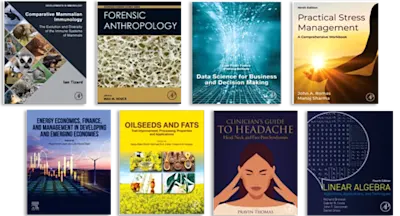
Case Studies in Material Selection
- 1st Edition - January 1, 2011
- Imprint: Butterworth-Heinemann
- Authors: David Cebon, Michael F. Ashby
- Language: English
- eBook ISBN:9 7 8 - 0 - 0 8 - 0 9 3 8 7 0 - 7
Selection of the best material and the most appropriate manufacturing process route are two decisions that will have significant impact on the final product. They are commonly… Read more

Purchase options

Institutional subscription on ScienceDirect
Request a sales quoteSelection of the best material and the most appropriate manufacturing process route are two decisions that will have significant impact on the final product. They are commonly based on human-resident experience or on established local practice. As such, some potentially usable materials or processes may be overlooked, and the material or process chosen to make some new and unfamiliar component may be sub-standard.
This book is a collection of over 50 case studies in systematic material and process selection, designed to give students and practitioners real-life examples of problems they will encounter throughout their engineering careers.
The case studies illustrate the use of a novel selection methodology and data system to select candidate materials and processes for a wide range of applications and components: mechanical, thermal, electrical, and combinations of these. Each case study addresses the question: out of all the materials or processes available to the engineer, how can a short list of promising candidates be identified?
Most of the case studies are generic: materials for beams, springs, flywheels, pivots, flexible couplings, pressure vessels and precision instruments are examples. The selection criteria they yield are basic to the proper selection of a material for these applications.
This book is a collection of over 50 case studies in systematic material and process selection, designed to give students and practitioners real-life examples of problems they will encounter throughout their engineering careers.
The case studies illustrate the use of a novel selection methodology and data system to select candidate materials and processes for a wide range of applications and components: mechanical, thermal, electrical, and combinations of these. Each case study addresses the question: out of all the materials or processes available to the engineer, how can a short list of promising candidates be identified?
Most of the case studies are generic: materials for beams, springs, flywheels, pivots, flexible couplings, pressure vessels and precision instruments are examples. The selection criteria they yield are basic to the proper selection of a material for these applications.
* Over 50 case studies that illustrate the best-practice method of material selection.
* Details a wide range of material applications: mechanical, thermal, electrical, and combinations of these.
* Provides the reader with problem-solving techniques for situations that may be encountered with processes.
* Details a wide range of material applications: mechanical, thermal, electrical, and combinations of these.
* Provides the reader with problem-solving techniques for situations that may be encountered with processes.
Engineering undergraduates studying Mechanical Engineering, Materials Science and Design Engineering; Engineering proessionals that work in Mechanical Engineering, Materials Science and Design Engineering.
Mechanical: Selection Methodology; Materials for Oars; Mirrors for Large Telescopes; Materials for Table legs; Materials for buildings; Materials for Flywheels; Materials for Cooling Fans; Golf-Ball Print Heads; Materials for Springs; Elastic Hinges and Couplings; Materials for Static Seals; Diaphragms for Pressure Actuators; Knife Edges and Pivots; Materials to Resist Fracture; Safe Pressure Vessels; Con-Rods for High Performance Engines; Piston Rods for Aircraft Vane Actuators; Materials for Deep Submersibles; Materials for Shaker Tables. Thermo-Mechanical: Insulation for Isothermal Containers; Energy-Efficient Kiln Walls; Materials for Sauna Walls; Materials for Passive Solar Heating; Materials for Storage Heaters; Heat Exchanger Tubes; Aperture Grills for Cathode Ray Tubes; Minimising Distortion in Precision Devices; Heat Sinks for Microchips; Ceramic Valves for Taps. Electro-Mechanical: Materials for Radomes; Materials for Bus-Bars; Windings for High-Powered Magnets; Windings for High-Speed Electric Motors; Materials for Relay Arms; Summary and Conclusions.
- Edition: 1
- Published: January 1, 2011
- Imprint: Butterworth-Heinemann
- No. of pages: 256
- Language: English
- eBook ISBN: 9780080938707
DC
David Cebon
David Cebon is Professor of Mechanical Engineering at Cambridge University in the UK.
Affiliations and expertise
Professor, Department of Engineering, University of Cambridge, UKMA
Michael F. Ashby
Mike Ashby is one of the world’s foremost authorities on materials selection. He is sole or lead author of several of Elsevier’s top selling engineering textbooks, including Materials and Design: The Art and Science of Material Selection in Product Design, Materials Selection in Mechanical Design, Materials and the Environment, Materials and Sustainable Development, and Materials: Engineering, Science, Processing and Design. He is also co-author of the books Engineering Materials 1&2, and Nanomaterials, Nanotechnologies and Design.
Affiliations and expertise
Royal Society Research Professor Emeritus, University of Cambridge, and Former Visiting Professor of Design at the Royal College of Art, London, UK